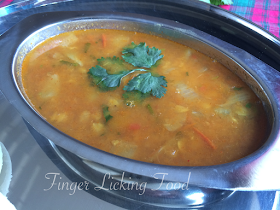After what seems like an eternity, I'm bringing this space back to life with a post. I've been collecting recipes, trying new ones and revamping old ones. Quite excited to share all of it with you, my awesome readers.
I've had my hands pretty full over the past 4.5 years. My little boys are no longer babies and are fast growing up. It's been great fun watch them grow.. And fight.. And laugh and do all the stuff little kids do. And now I have two more eager mouths waiting to try all the yummy goodies, so I'm back with the hope they will keep me motivated enough to keep this space alive and kicking!
I'm here to share a new recipe for the humble breakfast of us, South Indians. It's comforting, easy to make and pretty much loved by all from Toddler to Thatha (grandpa)! The awesome glorious Idli. Soft, pillowy, melt-in-the-mouth goodness. Dunked in piping hot sambar, your taste buds will thank you!
There are many versions to this dish and the key is finding one that works for you and holding on to it real tight. Idlis are a staple and you want to have a good solid recipe that yields beautiful idlis inside and out. This is one such recipe.
Note: Portion is any cup you choose to use. Make sure you use the same cup to measure out the ingredients listed.
Ingredients:
Makes : 45-48 idlis
4 cups Par-boiled rice/Idli rice
1 cup Urad dal
1/2 cup Sago/Sabudana (white tapioca pearls)
1 tsp Fenugreek(methi) seeds
Salt as required
Soak the urad dal and sago separately. Combine the rice and fenugreek seeds. Soak overnight or for atleast 6-7 hours. Grind everything into a smooth paste with very little water. The smoothness of the batter is important to achieve soft idlis. Combine well in a large bowl or container and allow to ferment overnight in a warm place. If it's winter in your part of the world now, then place batter in a pre-heated oven that's been turned off or in a cool oven with just the oven light turned on. Make sure you place the vessel/container on a sheet tray to catch batter overflows if any. Trust me, you don't want to wake up to a batter volcano - which is awesome coz it's a sign of great fermentation- but not so awesome when it comes to cleaning it up!
Most people add salt at this point but I prefer to add it the next day once it's fermented. I've noticed adding salt before makes the batter turn sour much quicker than if added later. The batter will double in volume so make sure you have the batter in a large deep vessel/container.
Once fermented, stir the batter. Add salt as needed (if you haven't already added it) This quantity needs about 3-4 teaspoons of salt. Add water only if needed. The batter should be thick but free flowing.
Apply oil on the idli plates. Fill each mold about 2/3rd of the way and place in a pressure cooker on high heat. When the steam rises, cook for 10 minutes and then turn off heat.
Remove idli plates and let rest for a minute before unmolding the idlis with a spoon.
Serve hot with Sambar and/or Coconut chutney. Both recipes are in this post from a few years ago.
The same batter can also be used to make Dosas. Add water to make a pouring consistency. Add little sugar to get a nice color on the dosas. More familiarly known in our local lingo as 'nice roast'. Make dosas on a non-stick tava or a seasoned cast iron pan. This batter makes tasty crispy dosas.





Hi
ReplyDeleteI tried this but sago is not grinding properly,I am soak all ingredients for 5 hours
Hi Sri Divya, maybe the sago wasn't soaked enough. It grinds best if the sago can be squished between your fingers, that's how soft it should be. I soak it overnight. Do try grinding it with a little bit more water and for longer.
Delete